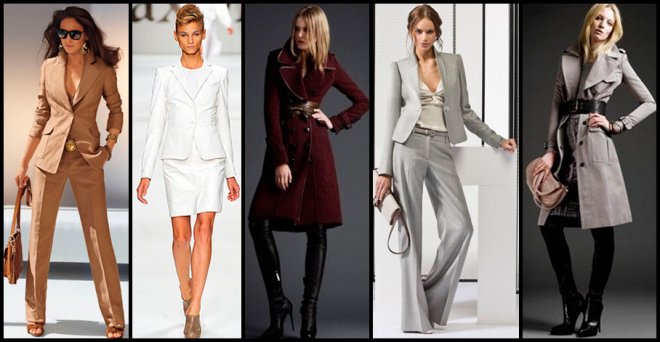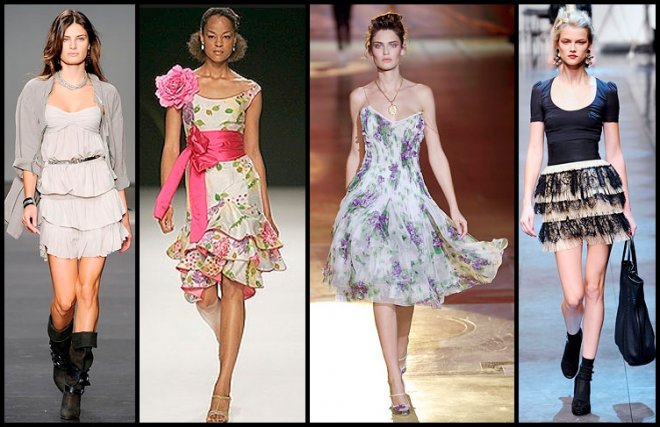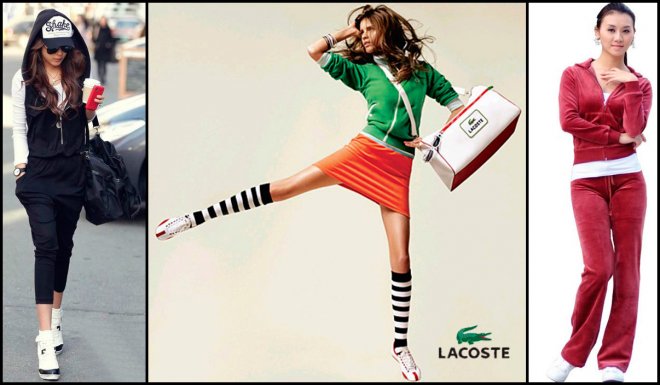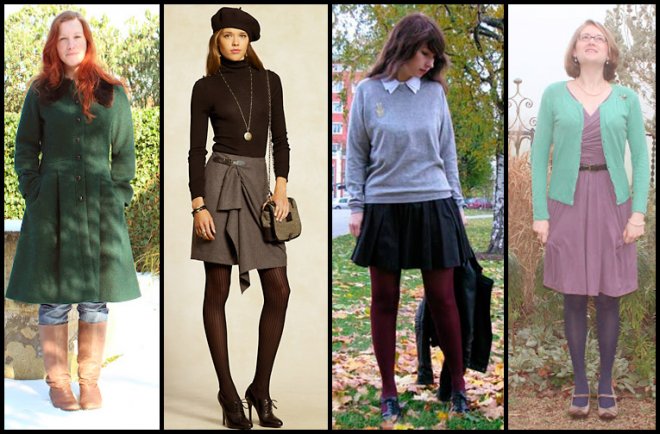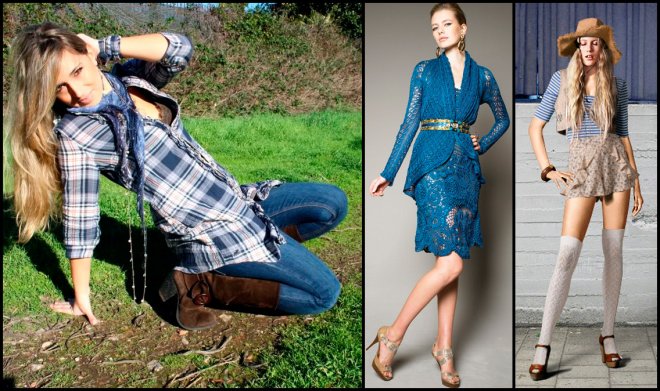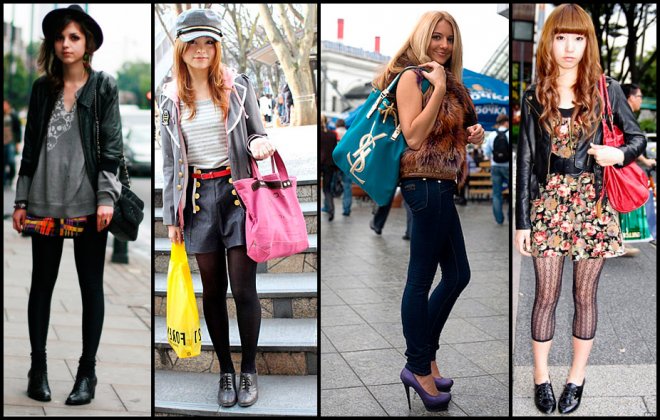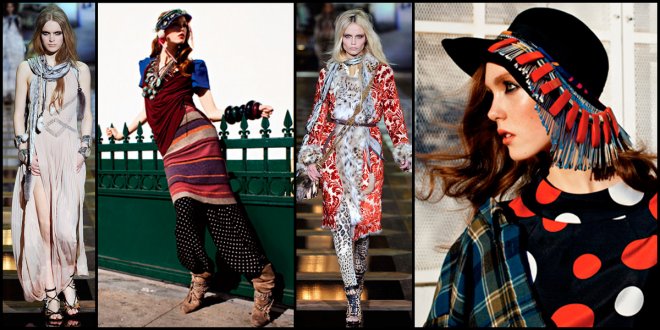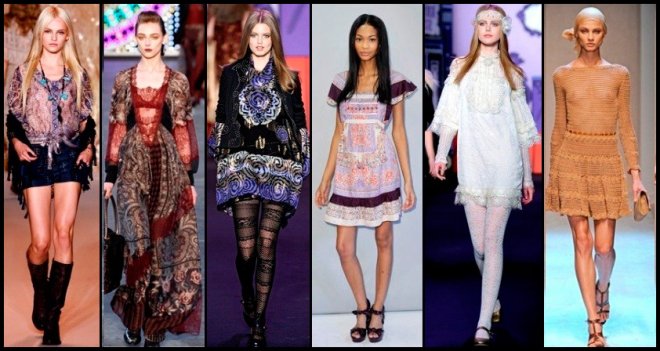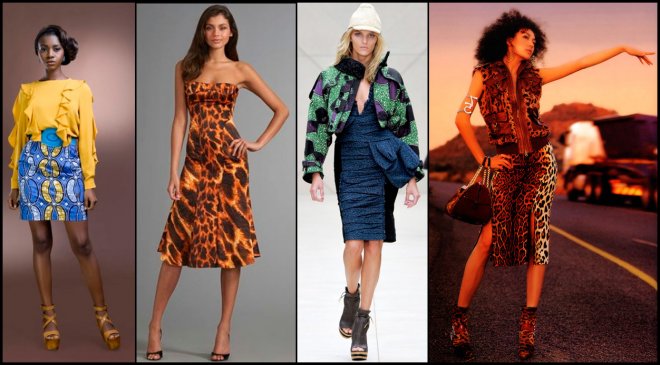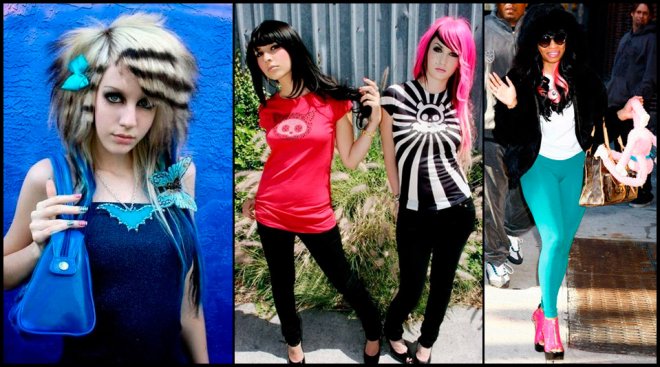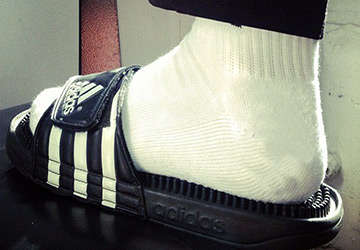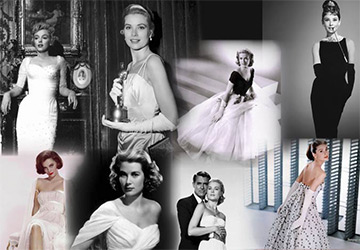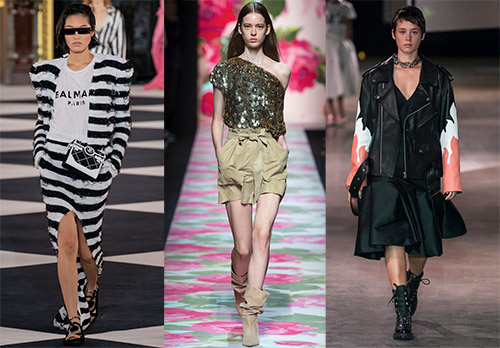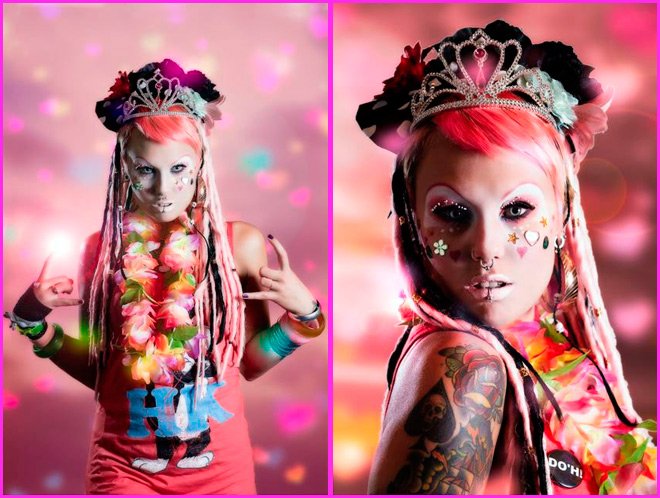Style
Clothing styles and style icons
In the fashion industry, we very often come across the concept "Style", "style icon", and in everyday life we often hear the following phrase: "have your own style." Choosing clothes, we, first of all, focus on those things that we like, are offered in fashion magazines, are popular among girlfriends, or those that can be found in the retail network at all. Let's talk today about what is the very concept of style, as well as what is really necessary in order to have it.
Style, in translation, is a certain set of features that characterize the individual style of self-expression in any area. The style can be musical, artistic, architectural, but today we are talking about the style of clothing, which means a certain set of features that characterize a particular ensemble (costume).
The second meaning of this interesting word comes from the Greek "stylus" - a bronze rod with a pointed end, used for spelling on wax-coated tablets. The revival of this subject took place quite recently, along with the advent of communicator telephones.
But back to style. Having found out what this concept itself means, at this stage, let's look at what styles are in fashionable clothes and how they are characterized. So, first of all, we denote 3 main styles: classic, romantic and sporty.
Classics in clothes similar to the classics in music. These are time-tested, discreet lines and forms that are always relevant, and are the basis for creating various other styles. I think that few women are not familiar with the classic style of clothing, which is also called business, therefore, this concept does not require detailed explanations. Well-known fashion designers advise - if you are in doubt about buying a new thing, not knowing which fashion trend to give preference to - buy the classics. In it, you will always look confident and flawless, you will be able to wear it in any situations, and not be afraid to look ridiculous.
- Romantic clothing style - akin to the classics, but less strict, combines the simplicity of lines with the lightness of shapes and a large abundance of small details.
Historical styles similar to it could be called rococo and baroque (which means - artsy, quirky, curled, intricate). The romantic style suits almost all women, implying softness, femininity and tenderness, gives each of them charm, charm and spontaneity. Clothes in a romantic style are dresses with frills, ruffles, flounces, frill collars, blouses with lace, loose sleeves, bell-bottomed trousers, as well as light, flowing fabrics - chiffon, silk, lace, thin cotton, delicate knitwear, guipure and etc.
Sportswear style... I think that a lot of clarification will not be needed here either - sports style is currently one of the most popular and widespread among modern youth. And, in my opinion, in vain. Young girls deprive themselves quite strongly, hiding their feminine forms under the mask of convenience, because I give you a head to cut off - any ultra-fashionable thing in a sporty style will not be able to decorate its owner as much as a feminine blouse or dress. Therefore, if you want to make an indelible impression on a man, I advise you from the bottom of my heart to shove your favorite tops and T-shirts on the shelf and wear something truly feminine. And there is absolutely no need to be afraid - he will appreciate it, you will see. The most feminine ensemble in a sporty style will be a skirt and leggings.
Over time, a huge number of different styles and their varieties have appeared, which are primarily due to visits to various cultural places of residence, age, gender, lifestyle, and are dictated mainly by the appropriate dress code:
Oxford clothing style... Came to us from England, is called the university of the same name. It means the severity of lines, combined with the density of forms and a restrained palette of tones, belongs to the varieties of the classic style. These are the clothes of pupils and students - blouses, plaid skirts, vests, pullovers, suits, coats made of dense fabric of muted tones, the colors of which are often dominated by the Scottish check.
Club style... It speaks for itself, and assumes a certain dress code, formed in the wide system of clubs. Includes features of many other styles - sporty, casual, glamorous, evening. Typical clothes are jeans, a T-shirt, a belt with a large buckle, a smart jacket, a turtleneck, a top, a mini-skirt, and a short dress. Differs in slim-fit silhouettes, is both free and sexy. It stands out with bright, shiny fabrics that reflect the light of night discos and allow you to most favorably distinguish yourself from the huge crowd.
I cannot but note the sad fact that our Slavic youth use the club style too often and not for their intended purpose - some girls can calmly appear in this form in college, or just go for a walk, thereby violating all the rules of accepted etiquette, and creating clothing used out of place, the image of cheap glamor.
Country style - literally "rustic", farmer, rural style. Long skirts, loose pullovers, coarse fabrics with large prints, cowboy boots and hats, chunky knits. The country style is somewhat similar to the romantic, but more rude, differs in straighter lines and simplicity of forms. Has its own special personality and suits most women. A long, loose skirt in combination with rough, leather, with straight heels, wide boots looks especially beautiful in country style.
Street fashion (style of city streets). Born in Tokyo as an alternative to gloss-imposed, stellar glamor. It is distinguished, as a rule, by mixing several styles, drawing up characteristic ensembles of clothes, both comfortable and most fashionable, allowing you to feel great on the street, and at the same time, stand out from the crowd. It can be a wide sweater combined with skinny jeans, a romantic dress with a warm cardigan and beret thrown over it, a jacket with a long, warm scarf thrown over it, Afghani trousers and other clothes. It is very popular in Europe, has a spirit of freedom, carelessness and youth, helps to express their own confidence and individuality.
Bohemian clothing style, usually owned by intellectuals and creative people of the arts. Often it has a very individual, in some ways even extravagant character. This style is characterized by accents on certain details - for example, a colorful scarf on a gray suit, dashingly pulled to one side, a knitted beret, or another individual manifestation of a particular person. Most often found among artists, musicians, actors, people who are not alien to non-standard stage images and creative thinking. It is actively used by modern showmen and other people from the field of art.
Ethno-style Borrowed its origin from various nationalities with their characteristic features of national dress. Loose and comfortable, akin to national costumes, these outfits are usually made in bright colors, with folk patterns and cut features. Ethnic style is usually very colorful, attractive, and loved by many who use its elements in their clothes: dresses, scarves, shawls, bags, boots, outerwear and much more.
Exotic clothing style Similar to the ethnic one, differing by and large by some fantasy and the use of natural motives. Images of African nature are especially popular in exotic style - jungle and savannah, plant prints, leopard print, green, white, as well as the color of a glowing sunset. Literally everything is done in an exotic style - dresses, bags, blouses and trousers, various accessories, outerwear. Elements of an exotic style can be found in the wardrobe of almost every girl, be it a light scarf, glasses, shoes, a handbag or a purse.
There are also several other interesting styles, due to the personal preferences of each person:
1. Glamorous style (luxury and charm)
2. Military (uniform and camouflage)
3. Safari (African hunting with a predominance of beige and khaki)
4. Casual (everyday comfortable)
5. Marine style (with a predominance of stripes of white, red and blue)
6. Extravagant style (sophisticated, pretentious, in order to attract attention)
7. Trash style (the main rule is to have no rules)
Trash style
The concept of clothing style can also be determined by the historical era: there are terms such as Greek clothing style, Victorian, 60s style, vintage, etc.
The varieties include other styles that arose under the influence of the fragmentation of various subcultures: informal, hippie, Gothic, glam rock, punk, grunge, etc.
We have considered the concept of style, and now let's talk about what is necessary in order to possess it.
Each style presupposes the aspirations of this or that person to express themselves and show themselves in the best possible light. Therefore, you must decide for yourself what is closer, more pleasant, more convenient and necessary for you. It's no use making yourself a cowboy if you are a humble office worker, just as it is no use inducing glamor to go to the market for groceries. In short, there are 4 things to consider when choosing a style:
- Personal preferences
- Work, hobbies, living environment - communication
- Features of your figure
- Fashion trends
In a word, you must understand well what exactly suits you, where it can be worn, and what exactly you want to say with this. At the same time, you should at least roughly imagine which things will be successfully combined with each other and which will not. More important here are the basic laws of fashionable silhouettes, the concept of shapes and generally accepted colors. It is not at all difficult to master all this if you understand one simple rule - all silhouettes are subdivided into top and bottom, based on the general beauty of lines, harmony of forms and the most disagreeable colors. Based on this, it is easy to understand that two super-bulky things - a wide sweater and loose trousers, for example, will not look harmonious together. Likewise, two oversized silhouettes won't look too good. You cannot wear colorful trousers to an exotic leopard-print blouse, and an ethno-style sweater to a business office skirt. You need to combine styles with each other competently and skillfully, but do not be afraid to experiment and discover something new for yourself. Over time, having mastered the rules of combination, you yourself will feel what suits you best, and this feeling will help in developing your own individual style.
Who are the style icons?
A style icon in the fashion industry is usually called a person who most successfully conveyed in his own image the characteristic features of a particular fashion style, combined with his own individual preferences. At least for a while, almost everyone can become a style icon - for this you just need to have good taste and a good understanding of fashion trends, be honest with yourself, and also have your own well-founded opinion.
You can read more about styles in the heading fashion - style
Comments and Reviews
Add a comment
Rating news
Shades of clothing that make women look younger
What shades of hair make women younger: rules and photos
Funny wedding dresses - photos and ideas
12 most expensive down jackets for the winter
How to look 25 at 40: tips from supermodels
Beautiful schoolgirls
Anti-aging haircuts and hairstyles for women
Fashionable skirts for autumn and winter
Fashionable women's trousers for the cold season
Fashionable and stylish sandals for summer 2024
Spring-summer 2024
 Fashionable dresses and tops with thin spaghetti straps
Fashionable dresses and tops with thin spaghetti straps
 Bandana tops: how to wear stylishly and beautifully
Bandana tops: how to wear stylishly and beautifully
 How to put together the perfect men's wardrobe for the summer
How to put together the perfect men's wardrobe for the summer
 Trendy shorts for spring-summer 2024
Trendy shorts for spring-summer 2024
 Fashionable skirts for spring-summer 2024: a guide to online shopping
Fashionable skirts for spring-summer 2024: a guide to online shopping
 The most fashionable dresses spring-summer 2024: styles and colors
The most fashionable dresses spring-summer 2024: styles and colors
 Fashionable total look 2024: image ideas and trends
Fashionable total look 2024: image ideas and trends
